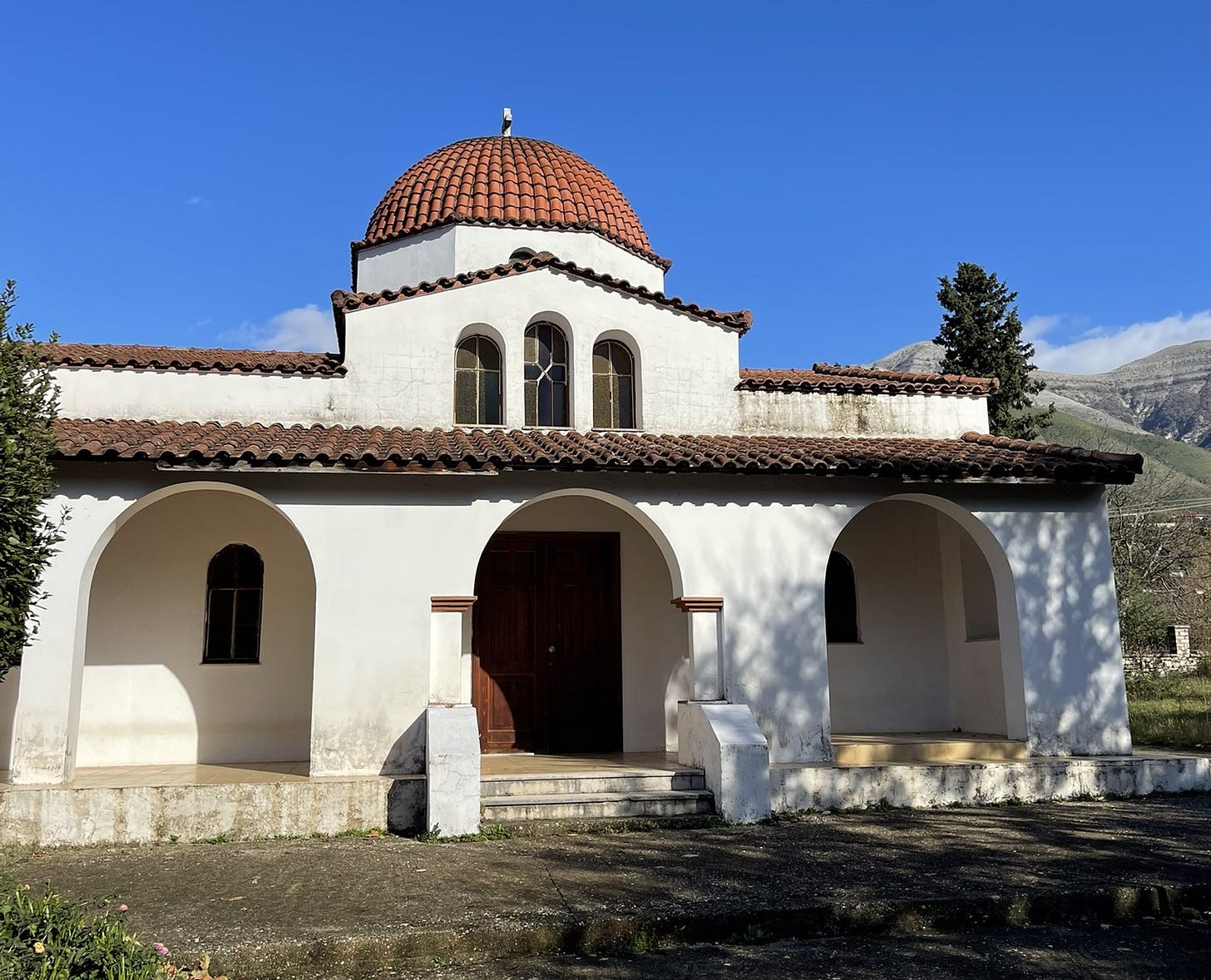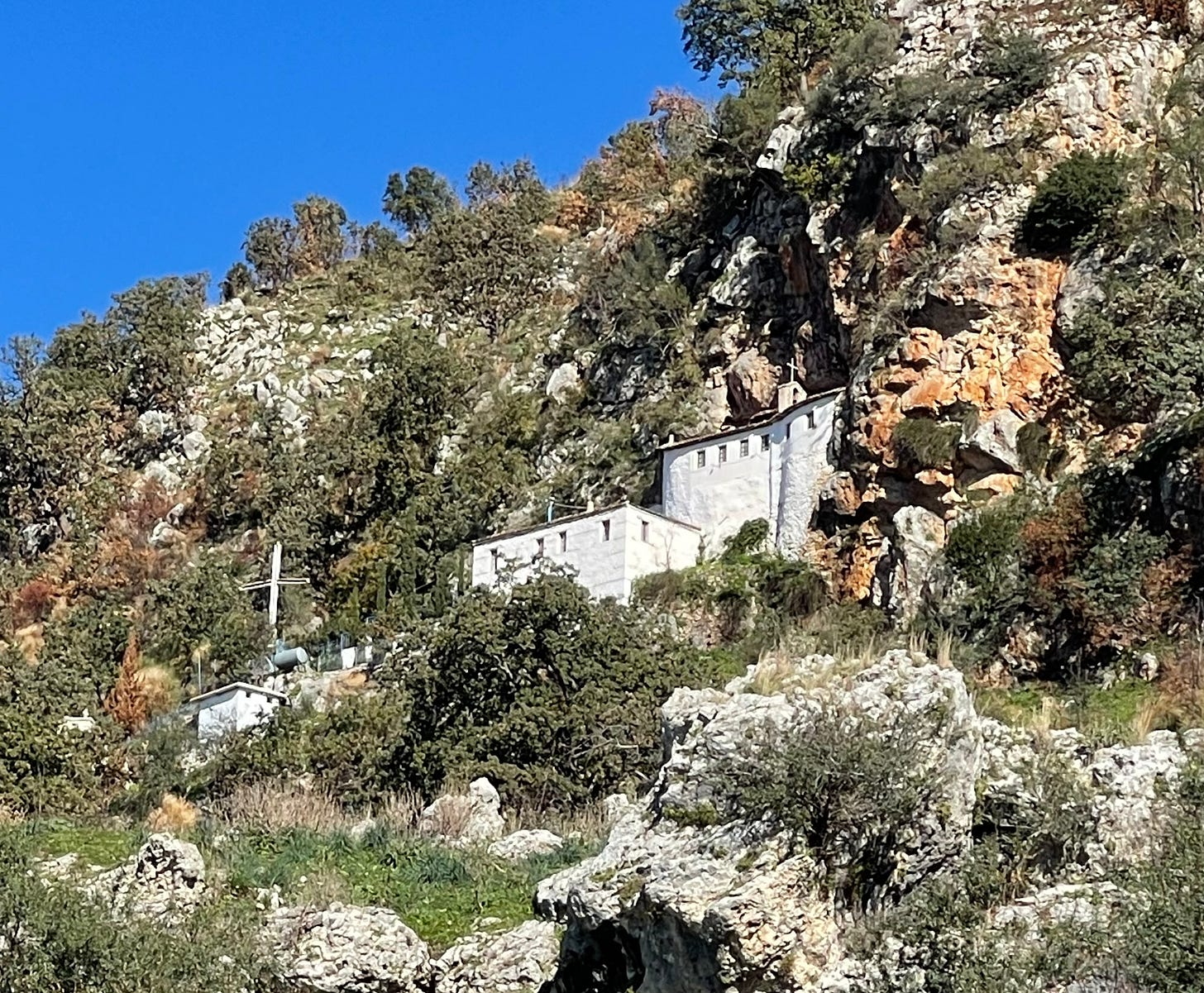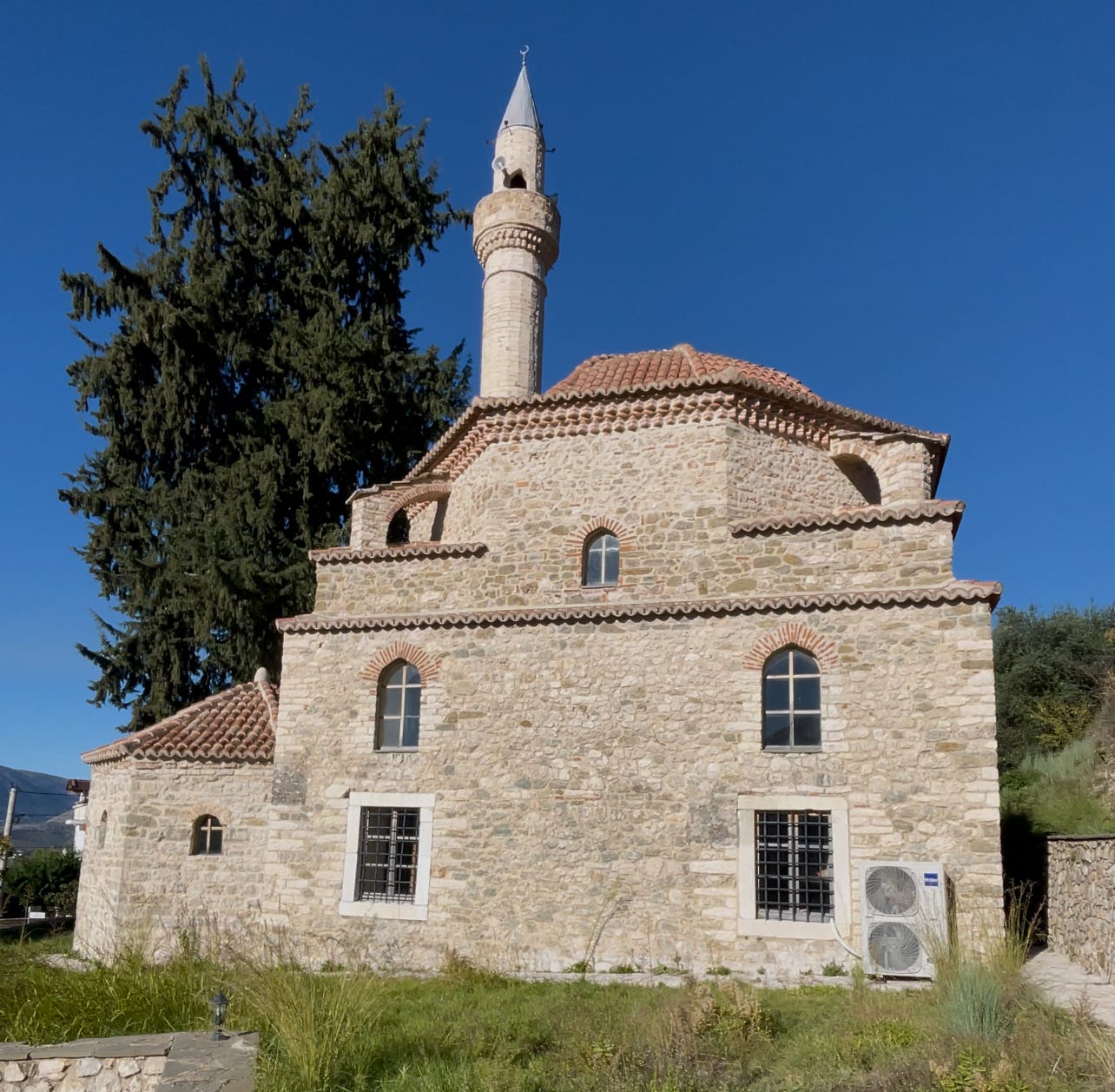What 48 Hours in Delvinë Taught Me About Albania
Why you should go off the beaten path and discover Delvinë
I had the incredible privilege to spend this past weekend in Delvinë, a small town located in the south of Albania, with a close friend whose family hails from there.
Exploring new corners of Albania is a hobby that never gets old, and as it turns out, the experience is enhanced by having a local show you around their hometown.
I came out of the weekend feeling refreshed and excited, having learned so much about Albania and seen so many new things (I thought I had done it all!).
These are the five things I learned about Albania as we explored ancient monasteries, walked through charming villages and discovered the unique natural sights surrounding Delvinë:
1) Repetitive Names Predominate
The first and most striking thing you’ll notice upon leaving Tirana for a small, lesser-known corner of the land of the double-breasted eagle is that getting around is not always easy. I had naively typed “Delvinë” into Google Maps, seen a small dot appear on the application near the Greek border, and blindly followed its instructions to plunge headfirst into Korcë county.
It was only as we approached Përmet that I realized we were driving towards the wrong Delvinë: there was one Delvinë in Korcë County, but we needed to head south and go to the Delvinë 20 minutes outside of Sarandë.
Blame it on driving in the dark, not knowing enough Albanian geography or the country’s hilarious and confusing habit of giving different locations and villages the same names (I’m looking at you, Bogë, Gramsh and Nivicë).
No matter; we arrived shortly before midnight in the sleepy village built on the side of a mountain. Some people say the name comes from the Albanian word for sheep dele, since the climate is excellent for raising the wool-bearing mammals that are so ubiquitous in Albania.
2) Albania’s Rural Communities Are Struggling
The next morning, we strode into town to explore the tiny center, comprised of a large square with tidy green lawns, multiple flagpoles and quiet coffee shops. Everywhere we went, mostly older people roamed the boulevard and tiny back alleys of this formerly prosperous village, while children ran freely through the streets, shrieking as they chased each other or trailed grandparents out for their morning xhiro.
You get the feeling, wandering the streets of a place like , that it must have been so different in its heyday. We sat down at the biggest cafe in the square to order two Turkish coffees and were immediately joined by my friend’s uncle - a small, friendly man who was excited to see his niece back home.
As the cafe owner came out to take our order, the conversation invariably turned to the state of the town, with the woman excitedly eyeing me up and down as she pleaded with me to bring tourists to her village.
“Ju lutemi, nuk ka mbetur njerëz këtu!” - “Please, there’s nobody left here anymore!”
And it was true - all throughout our stay in Delvinë, we saw no one our age. All the young people had long left for Tirana or the EU, seeking better opportunities.
All that was left were the older generations and the very young children of the family, who could still be counted upon to smile at me in shock when I tried to speak in broken Albanian with them.
The story of rural Albania is unfolding in plenty of other countries: the slow yet steady migration of the young and working-age majority of the countryside leaves for better opportunities in the large cities and metropolitan areas, a narrative all-too familiar to Americans and Western Europeans.
With their magnetic pull, the cities dilute local culture and water down its authenticity; I can’t remember the last time someone in Tirana asked my friend if she and I were married, if we were living together and who her father was.
(All entirely normal questions for a villager to ask in Delvinë!)
3) History is Everywhere
Still at the cafe in the square, Beharja, my new best friend in Delvinë, eagerly pointed at an inscription on the wall of the cafe, which proudly proclaimed that this was the first place where the Albanian writing club (was I destined to sit at this cafe?) convened to discuss the formation of a formal Albanian alphabet. That convention would eventually take place in Manastir, known today as Bitola, in North Macedonia.
She then took me by the hand and led me inside the cafe, where older men sat at small plastic tables smoking cigarettes and played pool. I sheepishly took her phone number as she continued to ask me all about my life in Albania and when I would come back to Delvinë.
After coffee, we headed to the old neighborhood of Delvinë, Llaka, where houses were built out of stone and overlook the partisan memorial and the understated yet beautiful Holy Church of the Annunciation, an Orthodox establishment with a striking bell tower and a graceful, humble monk roaming the grounds.
Right outside the church grounds stands the town’s signature obelisk with the Communist star at its top, a memorial honoring the young Albanian (and occasional Italian) fighters who liberated Albania from the Nazis during World War II. As I walked past each gravestone, I couldn’t help but feel a twinge of sadness at the young lives cut short.
These types of structures are ubiquitous in Albania: while Albanians today certainly don’t support Communism, the monuments have stayed up as a symbol of resistance against the country’s final colonizing force before its own brutal dictator took the reins.
The town’s recent history exemplifies the Balkan trend of everything happening everywhere all at once in this region of Europe. Before the Italians and the Germans, there was the Ottoman occupation, preceded by Venetian and Slavic/Serbian conquests.
Not to mention the heavy Greek influence in the town. Many of its inhabitants, my friend included, speak fluent Greek and have roots from just over the border.
And did I mention that Albania’s first-ever prime minister, Sulejman Delvina, hails from this tiny village? The young Sulejman studied in Ioanina, Greece and Istanbul, working multiple posts in the Ottoman Ministry of Interior afterwards.
Delvina was a fierce patriot who advocated for the recognition of the Albanian alphabet as it was decided upon at the Manastir Congress of 1908. In 1919, he participated in the Paris Peace Conference to make the case before the Greater Powers for Albania’s independence; the following year, the Congress of Lushnjë appointed him the country’s first Prime Minister.
We didn’t have enough time to explore all the history waiting to be uncovered in this region; next time, I’d love to visit the Phoenice Archaeological Park, which offers those interested in ancient history plenty to dig into. Phoenice used to be the capital of the Greek Chaonian tribe, believed to have settled and controlled Delvinë in antiquity. Strategically located ruins are all that remain of what was once the wealthiest city in all of Epirus.
4) Religious Coexistence is the Norm
Our trip to south Albania ended up being a bit of a monastery tour; we saw four, and the only reason we didn’t see even more was because we ran out of time.
Picturesque little Orthodox monasteries dot the green, mountainous terrain of this region like snails after a storm. Some are quite famous, such as the Monastery of St. Mary in Kostar, a village high up in the mountains outside of Delvinë.
It was the perfect stop as we made our way to Syri i Kaltër, the infamous Blue Eye of Sarandë.
The ancient Manastiri i Kostarit, as it’s known in Albanian, dates back to the 14th century and enjoys sweeping views over the plains of Finiq, which unfold like a giant green blanket punctured by short hills and mountains.
The monastery reminded me a bit of Cappadocia in Turkey, where churches, houses and entire villages were built into mountainside caves. This monastery is entirely carved out of the side of the mountain and offers a quiet place for meditation and reflection.
Back in Delvinë, we saw not only an Orthodox Church but also visited one of the three local mosques, Xhamia e Gjin Aleksit. The Mosque of St. Alex, as its name implies, had once been a church and looked a lot like an Orthodox structure from the outside, sporting a signature orange-brown hue dome below its tall minaret. My friend told me stories of how she would come here as a child with her friends to pray.
Her background is quintessentially Albanian: Muslim mother, Orthodox father. She identifies more with the latter and frequents Orthodox churches to pray, but gladly enters and prays at mosques as well. Mixed marriages are quite the norm in Albania, where religion isn’t seen as a dividing force.
We had completely forgotten to visit Kisha e Shën Janit, the Church of St. John. This Protestant Basilica-style church is no longer in service but stands as a cultural monument in the Blerimas neighborhood of Delvinë; it’s currently under renovation.
Before we hit Syri i Kaltër, we went through the town of Mesopotam to survey the St. Nicholas monastery. This monastery is thought to have been built in the early 1200s and, due to its double-apse structure, to have served both Catholic and Orthodox communities. Unfortunately, it was closed; inside, there are apparently grandiose depictions of lions and serpent dragons.
As we headed into Sarandë that evening to walk along the boulevard, we passed by the Onhezmus Synagogue Basilica complex right before the waterfront. This complex of ruins is where an ancient Jewish community once thrived in the fifth century. A basilica was converted to a synagogue here, as attested by the remains of multiple mosaics showcasing traditional Jewish symbols like a ram’s horn (shofar blown during Rosh Hashana), menorah (lit during Chanukah) and etrog (citrus used during Sukkot).
5) Nature Here is Mythical
Even though it was the dead of winter, we saw plenty of tourists from Europe and Asia surveying the incredible array of colors on display at Syri i Kaltër, the Blue Eye of Sarandë, where we could barely take pictures without someone photobombing us.
Nature here is jaw-droppingly beautiful and inspiring. There are so many myths and legends about Syri i Kaltër and the Bistrice River, which feeds into the Blue Eye, that I could dedicate a whole post just to documenting them.
The most popular one about Syri i Kaltër is that it was formed by the eye of a massive child-eating snake, which terrorized the villages around Delvinë until it was mortally wounded by a clever local man. The snake tried to eat the donkey he was riding; right before it could, the man set the straw on the donkey’s back on fire. The snake ate the poor donkey, the fire inside its belly wounding and causing it immense pain.
As a result of its altercation with the man, the snake lost its eye where Syri i Kaltër is now located, and the water covered it up; the serpent’s eye continues to cry out in pain, even today.
Albanians are definitely a little obsessed with the evil eye, and their naming of the beautiful fifty-meter-deep water source “Blue Eye” exemplifies how ubiquitous local superstitions are.
And everywhere we went, we saw images of this massive snake, which many versions of the legend actually call a dragon. In the St. Nicholas Monastery of Mesopotam, for example, there were carvings of a snake with a knotted tail adorning the outside walls, alongside the legendary and all-too-common depiction of the double-breasted eagle depicted on the Albanian flag.
It was November, but we still wanted to enjoy some time at the beach on the sunny and clear day. We initially tried Kakome Beach, whose entrance is now blocked by guards who prohibit anyone from entering; unless, that is, you have the right connections to the area, which my Delvinë-hailing friend most certainly did. The guards allowed us to enter the private road, and we were ecstatic to see that we were the only ones on the beach.
That is, until we got close to the water and were greeted by a pack of aggressive stray dogs. We decided not to test our luck and headed back, ultimately driving to the deserted northern half of Lukovë Beach. The long, undulating half-crescent beach was ours for the final 2 hours of the day, providing the perfect way to end a beautiful weekend.
You Should Definitely Visit Delvinë
Tourists interested in exploring South Albania should definitely visit and stay in Delvinë and the surrounding towns. The village is just 17 kilometers away from Sarandë, offering easy access to all the well-known points of interest, as well as the opportunity to discover the lesser-known monasteries and sites that dot the countryside.
There’s no paucity of places to visit, and the sites are breathtaking in their simplicity and beauty. Staying in Delvinë also supports rural communities, which have struggled over the past few decades, giving locals the opportunity to benefit a bit from the tourism boom that has benefitted better-known towns and locales like Sarandë, Dhërmi and Himarë.














